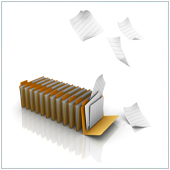 Does your company use cloud storage services or peer-to-peer (P2P) networks for the storage and sharing of data? Many businesses are now using both these services in an effort to make work less complicated. But did you know that there are potential issues in relation to recoverability and security of data?
Does your company use cloud storage services or peer-to-peer (P2P) networks for the storage and sharing of data? Many businesses are now using both these services in an effort to make work less complicated. But did you know that there are potential issues in relation to recoverability and security of data?
With the seizure of a number of cloud storage and sharing websites, including Megaupload, and the seemingly omnipresent malware in P2P files and the shaky security in relation to P2P networks, businesses have had their hands full staying secure. Do you know what your options are when it comes to data security?
Cloud Services Knowhow
The recent seizure of Megaupload’s files and servers by the US Government caught many people and businesses unprepared. While Megaupload’s main purpose was file sharing, it was found that a large number of organizations were using their services to store files. If you had files stored on Megaupload, the chances of getting the files back are non-existent.
It needs to be pointed out that many cloud services don’t guarantee that files stored on the service will be recoverable in the event of a crash, or disruption in service, e.g., a government seizing servers. If you read the user agreements of a number of major cloud services, they all have clauses stating that if data stored on their service is lost for any reason, it’s gone forever, and the hosts can’t be held liable for losses.
Risks of P2P
With high speed Internet widely available at low prices, P2P file sharing has become incredibly popular, it’s almost uncommon to find someone who has never used a P2P service. If you or your employees use P2P at your office, there are a number of potential security threats you should be aware of:
What Should I do?
With regards to cloud services, as with anything that comes with a contract, the first thing you should do is gain an understanding of it by utilizing reading material such as blogs, news articles and Wikis. It’s a pain in the neck, but it’ll help you understand the boundaries of the program and your responsibilities. Remember that if you go to court to get files back from a company, and it becomes known that you didn’t read the agreement, you’ll probably end up losing that case.
Second, it’s not recommended to keep single copies of data on one cloud service. Chances are high that in your business, you store your data and backups in a place separate from the computer. This makes sense with the cloud as well – keep your data with a number of different cloud services. If it’s important enough, have physical backups of what you put in the cloud.
For P2P networks there are also a number of steps you can take to protect the data on your network:
The most important thing is that whatever the situation is, you take action to try to solve the problem while frequently revisiting the actions to ensure that they are working. If you’d like to learn more about document sharing over the cloud, or via P2P networks, give us a buzz. We’re more than happy to help.